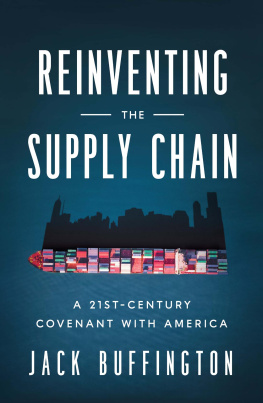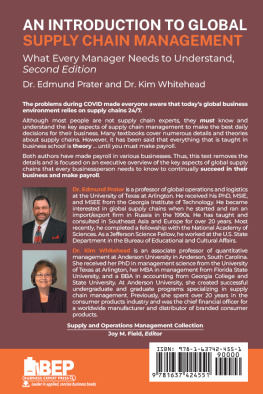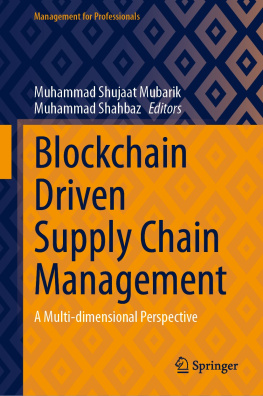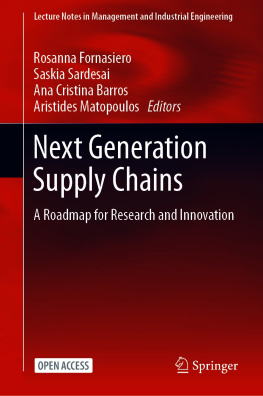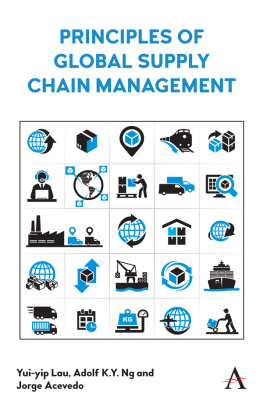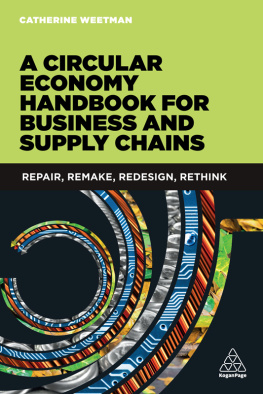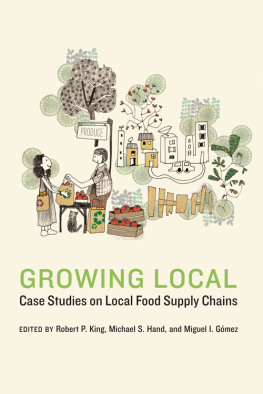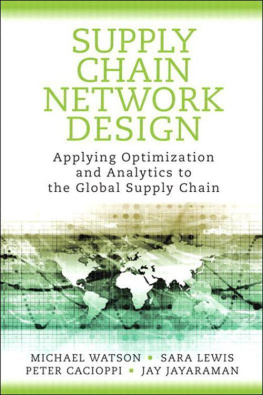Contents

REINVENTING
THE
SUPPLY CHAIN
REINVENTING
THE
SUPPLY CHAIN
A 21ST-CENTURY
COVENANT WITH AMERICA
JACK BUFFINGTON
Georgetown University Press / Washington, DC
2023 Jack Buffington. All rights reserved. No part of this book may be reproduced or utilized in any form or by any means, electronic or mechanical, including photocopying and recording, or by any information storage and retrieval system, without permission in writing from the publisher.
The publisher is not responsible for third-party websites or their content.
URL links were active at time of publication.
Library of Congress Cataloging-in-Publication Data
Names: Buffington, Jack, author.
Title: Reinventing the supply chain : a 21st-century covenant with America / Jack Buffington.
Description: Washington, DC : Georgetown University Press, 2023. | Includes bibliographical references and index.
Identifiers: LCCN 2022005423 (print) | LCCN 2022005424 (ebook) | ISBN 9781647122997 (hardcover) | ISBN 9781647123000 (ebook)
Subjects: LCSH: Business logistics. | Business logisticsUnited States.
Classification: LCC HD38.5 .B84 2023 (print) | LCC HD38.5 (ebook) | DDC 658.500973dc23/eng/20220509
LC record available at https://lccn.loc.gov/2022005423
LC ebook record available at https://lccn.loc.gov/2022005424
This paper meets the requirements of ANSI/NISO Z39.48-1992 (Permanence of Paper).
24 239 8 7 6 5 4 3 2 First printing
Printed in the United States of America
Cover design by Faceout Studio, Paul Nielsen
Interior design by Paul Hotvedt
CONTENTS
The global supply chain is something most consumers take for granted. We order something today, and almost magically it arrives at our doorstep from a local distribution center the next day, with free shipping. However, we do not understand the raw materials and energy required to make and ship the product or the source country of origin. It was only when the coronavirus pandemic disrupted the global supply chain system in the spring of 2020 that consumers began to pay attention to the weaknesses in the system. Even business leaders and supply chain executives, who may be experts in their industries or sectors, sometimes lack a global perspective on the system. Reinventing the Supply Chain takes a wide-angle lens approach to tell the story of how our modern supply chains work, how they deliver goods to us seamlessly and inexpensively, why the global supply chain network needs to evolve continuously to be effective, and what changes we need to make for a better future.
When we take the time to think about it, we can appreciate how these global supply chains, in aggregate, constitute some of the most important inventions in human history. In 1990, 5.2 billion people inhabited the earth, with 1.9 billion, or approximately 36 percent, living in poverty, mainly in Asia and Africa. By 2019 the world population had grown by 45 percent to 7.5 billion; at the same time, there was a reduction in the number of people living in extreme poverty, down to 600 million. During this period extreme poverty in the world fell from 36.2 percent to 8.6 percent, with 60 percent of the improvement happening in China alone. However, the system that has delivered some of the most significant accomplishments in human history is also insufficient to meet the economic and societal needs of the 21st century. Recent examples include an inability to provide life-saving medicine, supplies, and technologies during the global COVID-19 pandemic and a failure to manage natural resources, address significant socioeconomic inequality across the planet and within communities, and ameliorate the growing environmental crisis of climate change.
What forecaster from the 20th century would have predicted such a remarkable reduction in poverty, numbering in the hundreds of millions if not a billion, within
How can such apparent contradictions of success and failure exist within the same system? When I answer this question, I reply that while supply chain management is a problem-solving field, we focus solely on how the problem is defined, which can often lead to solving one problem while inadvertently creating another. This paradox can be a maddening juxtaposition, for why is it rational to produce nearly all the worlds personal protective equipment in a few factories in the world to increase economies of scale while at the same time not being able to support the health and safety needs for material during a global pandemic? The war between Russia and Ukraine has led to similar challenges related to food, energy, and other critical commodities within the global economy. The answer is that our supply chains are optimized to meet private market objectives rather than consider the resiliency needed to ensure the public good in a time of crisis. For example, when a lack of demand exists in ranching and agriculture, it becomes financially optimal to pour milk down the drain, turn crops over in the fields, and euthanize cattle at the ranch rather than providing these foodstuffs to the world hungry. Wasting food may be ethically wrong, but market efficiency delivers a scalable, efficient system that provides the highest service levels and lowest cost at the most significant volumes to consumers, leading to higher profitability.
Deindustrialization and Its Fallouts
Before the COVID-19 pandemic, these supply chains showed their inherent weaknesses in handling the complexities of a growing and technologically advanced marketplace. The pandemic was more of a tipping point than a root cause of the problem.
Deindustrialization in America and elsewhere may be one of the worst-kept secrets, often ignored yet appearing in the ugliest manners, unaddressed and fermenting over decades. Despite the title of Thomas Friedmans acclaimed, bestselling 2005 book The World Is Flat, it is not: instead, the world is a spiky place, nation by nation and even community by community, with global supply chains choosing winners and losers and unintentionally leaving others behind. We think of this as a uniquely American problem. But it is also the case in Germany, France, the United Kingdom, and even China, a nation of 1.4 billion that still has hundreds of millions living in poverty. Once-prosperous crown jewels of Americas industrial yesteryear have morphed into boneyards of steel and textile mills and automobile factoriesinfamous museums to the global supply chain. In China, factories and even entire cities have been abandoned. Deindustrialization has become an international problem.
The challenge in todays 21st-century supply chain competition must involve leadership in technology to achieve a fast-paced, innovation-driven engine to solve problems and an emphasis on training, education, and achieving societal and environmental balance within communities. Supply chains must incentivize across public and private sector objectives rather than an out-of-balance path toward one and away from the other. The evidence demonstrates that a short-term view of profit and growth required of publicly traded companies that often focus on markets through consumer obsession and maximization of shareholder value is not sustainable. In my career, I have worked in manufacturing and supply chain for a company that paid its hourly employees a stable wage to support a middle-class lifestyle while returning adequate profits to its shareholders. This strategy was in no way contradictory to meeting market objectives, and I was responsible for meeting financial targets while at the same time treating our workers with respect and admiration. When I did not hit my financial targets, I was responsible for following a structured, problem-solving exercise to address the issues and develop solutions rather than focusing on the symptoms that might have been easier to remedy through stopgap measures like outsourcing to lower-paid workers. Indeed, I sometimes had to make short-term, short-sighted decisions that focused more on quarterly earnings and stock market performance than the companys longer-term viability and its employees. A problem-solving supply chain system must focus on all stakeholders, including shareholders, workers, suppliers, and the community. Supply chains must meet these objectives by being rebalanced to better meet the needs in the long term for all stakeholders.

